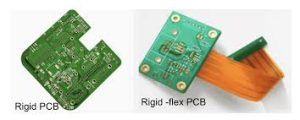prevent delamination in flex circuit pcb
Preventing delamination in flex circuit PCBs is crucial for ensuring the reliability and longevity of electronic devices, particularly in applications where the circuits are subjected to mechanical stress, temperature variations, and environmental factors. Delamination occurs when the layers of the flex circuit separate from each other, typically due to inadequate bonding between the substrate layers or exposure to excessive heat, moisture, or mechanical forces. Implementing effective preventative measures is essential to mitigate the risk of delamination and ensure the integrity of flex circuit PCBs.
One of the primary strategies for preventing delamination in flex circuit pcb is to use high-quality materials with strong bonding properties. Choosing substrate materials with appropriate thermal and mechanical properties, such as polyimide or liquid crystal polymer (LCP), can help ensure robust adhesion between the layers of the flex circuit. Additionally, selecting adhesives and bonding agents specifically formulated for flex circuit applications can enhance bonding strength and durability, minimizing the risk of delamination over time.
Moreover, controlling the manufacturing process is essential for preventing delamination in flex circuit PCBs. Proper handling, storage, and processing of materials during fabrication are critical to maintaining the integrity of the flex circuit. Strict adherence to manufacturing guidelines, including recommended curing temperatures and times for adhesives and bonding agents, helps ensure uniform bonding and minimize the risk of delamination. Additionally, conducting thorough quality control inspections at each stage of the manufacturing process can help detect any potential issues early and prevent delamination from occurring.

How do you prevent delamination in flex circuit pcb?
Furthermore, implementing proper design practices can help prevent delamination in flex circuit PCBs. Design considerations such as trace routing, component placement, and stackup configuration can impact the mechanical stress and thermal performance of the flex circuit. By optimizing the layout and design of the flex circuit, engineers can minimize areas of high mechanical stress and reduce the likelihood of delamination occurring. Additionally, incorporating features such as strain relief structures, stiffeners, and support elements can help distribute mechanical forces and reinforce the flex circuit, enhancing its resistance to delamination.
In addition to material selection, manufacturing processes, and design considerations, environmental factors play a significant role in preventing delamination in flex circuit PCBs. Exposure to excessive heat, moisture, and humidity can weaken the adhesive bonds between the layers of the flex circuit, leading to delamination over time. Therefore, controlling the operating environment and implementing protective measures, such as proper encapsulation, sealing, and conformal coatings, can help shield the flex circuit from environmental hazards and prevent delamination.
Regular inspection and maintenance are also essential for preventing delamination in flex circuit PCBs. Periodic checks for signs of delamination, such as bubbling, warping, or separation between layers, can help identify potential issues early and take corrective action before the problem worsens. Additionally, conducting environmental testing, such as temperature cycling and humidity exposure, can simulate real-world operating conditions and assess the durability and reliability of the flex circuit over time.
In conclusion, preventing delamination in flex circuit PCBs requires a multifaceted approach that encompasses material selection, manufacturing processes, design considerations, environmental controls, and regular maintenance. By implementing effective preventative measures and adhering to best practices throughout the design, fabrication, and operation of flex circuit PCBs, engineers can minimize the risk of delamination and ensure the reliability and performance of electronic devices in diverse applications.



